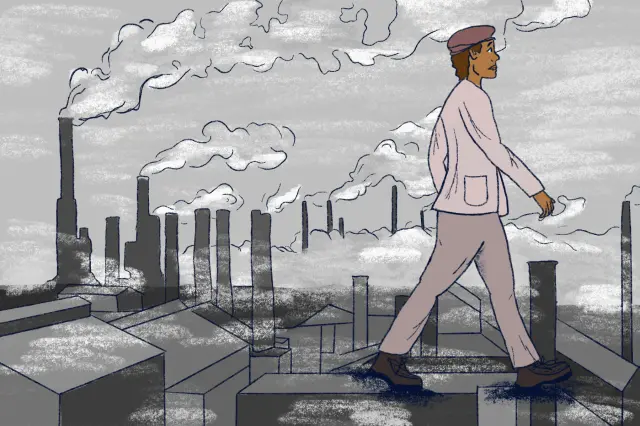What was America’s population through history?
- Classic City News

- Sep 7, 2024
- 4 min read

The first inhabitants of what is now the United States appeared around 15,000 to 20,000 years ago — a blip in time compared to the annals of some of the earliest places humans lived. Initially, population growth was slow due to the continent’s geographic isolation; significant increases began only after Europeans made their way to the Americas throughout the 16th and 17th centuries. By the 20th century, the U.S. population was experiencing rapid expansion — a trend that has slowed in recent years. Here’s a look at America’s changing population through history, from early prehistoric arrivals to the decline we’re seeing today.
Prehistory

The North American continent was inhabited by prehistoric humans, although they arrived much later than humans in other parts of the world. While early human species have been around for millions of years, the first people didn’t make their way to North America until sometime between 20,000 BCE and 13,000 BCE. It’s believed they traveled via the Bering Land Bridge from modern-day Siberia to Alaska, although exactly when and how they first arrived is still a matter of debate. The number of people who were around in this era is debated as well, and while estimates vary, it’s believed some 230,000 people were living in America by 10,000 BCE.
Antiquity

By 1 CE, an estimated 640,000 people were living in what is now the United States. Indigenous peoples developed agricultural practices that helped to define their communities, especially along the Mississippi watershed. By 1100 CE, a settlement known as Cahokia, located across the Mississippi River from modern-day St. Louis, was home to about 20,000 people. The population continued to grow throughout the land, and by 1400, there were an estimated 1.74 million people in the modern-day U.S.
When Christopher Columbus landed in the Caribbean in 1492, that number had increased by nearly 150,000 people. But in the years that followed, as other European explorers began to map and claim parts of North America, waves of disease, displacement, and conflict had a major effect on the population. Within 100 years of the first European landing in the New World, an estimated 85% to 90% of the Americas’ Indigenous population was wiped out. In the modern-day United States alone, the population dropped almost 60% between the years 1500 and 1600, from 1.89 million to 779,000.
Colonial Era

By the early 1600s, Spanish and English explorers had established permanent settlements in what is now St. Augustine, Florida, and Jamestown, Virginia, and by the mid-1600s, the Pilgrims had established themselves in modern-day Massachusetts. By 1700, the population of the colonies had grown to an estimated 250,000. Official population estimates at the time did not include Indigenous peoples, an omission that wasn’t corrected until the late 19th century; scholars who later attempted to include Indigenous populations in the count put it closer to 900,000. In 1776, when the U.S. gained independence from England, the known population had surged to approximately 2.5 million — but the new country was about to undergo even more transformation.
Industrial Revolution

The period of time from the American Revolution through the end of World War II saw explosive population growth. In 1790, the first official U.S. Census Bureau counted 3.9 million Americans living in the country. This era coincided with the start of the Industrial Revolution, a transformative time in the Western world. Technological innovation not only marked a societal shift from agrarian to industrial economies, but also spurred rapid urbanization. The era saw improvements in working conditions, sanitation, and medical care, too, making life expectancy longer than ever before. Ten years after the first U.S. census, in 1800, the population had shot up by almost 1.4 million people to reach 5.3 million. That surged to 23 million by 1850, fueled largely by a wave of European immigration to the U.S. By 1900, the country was home to 76 million people, a number that also reflected the country’s Indigenous residents. America’s population continued to grow during the early 20th century, reaching about 148 million by 1945.
Baby Boom

The post-World War II era saw a dramatic increase in birth rates — a trend that famously became known as the baby boom. The sharp rise was due to a number of factors, key among them being economic prosperity, soldiers returning from war, and a cultural emphasis on family life. By the time the boom tapered off in 1964, some 76 million babies had been born, and these new citizens made up almost 40% of the country’s population of almost 197 million.
Today

In 2024, the U.S. Census Bureau counted America’s population at 337 million people. And while that’s an all-time high, the rate of growth has been slowing down. The baby boom was followed by a period of lower birth rates, which remain on a downward slope. Meanwhile, an aging population means death rates are projected to meet or exceed births.
The postwar period also saw changes in U.S. immigration policy, including the Immigration and Nationality Act of 1965, which did away with previous immigration quotas, opening the doors to more new Americans. Immigration has been the main driver of the country’s population growth since 1970, and that trend is expected to continue. In 2023, the Census Bureau projected that sustaining diverse immigration will help to balance the effects of an aging population. Still, despite a projected global population increase of nearly 2 billion people in the next 30 years, the U.S. population is expected to peak at around 370 million by 2080, then decline slightly to 366 million by 2100.







